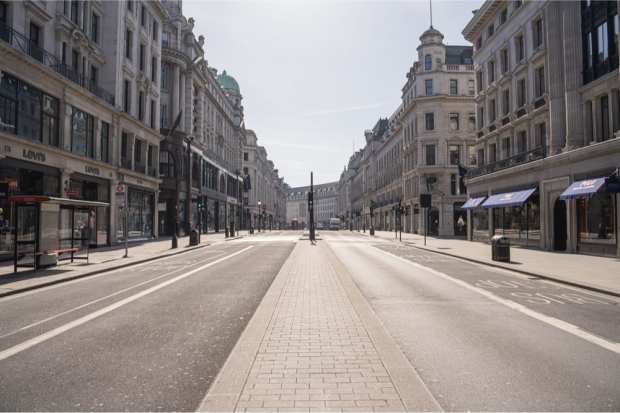UK Agencies Paint Stark Reality For Retail

The U.S. retail picture is bleak in this time of COVID-19. But the U.K. may be even worse. Data from February shows the U.K. economy was already sliding into declines during February, well before the coronavirus and the accompanying lockdowns were a factor.
The Confederation of British Industry (CBI) said on Thursday (March 26) that its monthly survey of retailers showed the weakest outlook since April 2009. The results of its survey suggest that U.K. households are stockpiling groceries and putting off purchases of non-essential items. Even eCommerce sales have slowed to a below-average pace. The CBI says retail sales volumes will fall sharply to April, with retailers more pessimistic than at any time since April 2009. All sectors have been affected, with grocers expecting stable sales.
“These are extraordinary times for the retail sector. Grocers are seeing a temporary increase in demand because of coronavirus. But many other retailers are seriously suffering as households put off non-essential purchases and social distancing keeps people away from the High Street,” said CBI Principal Economist Ben Jones. “The Government and Bank of England have already taken welcome, substantial steps to support business during this unprecedented period. What’s needed now is clarity over the support available to firms and fast action to ensure measures announced last week are accessible to businesses of all sizes.”
Another survey released this week — this one of purchasing managers from the services sector — showed a rapid global slowdown, with the main economic index for Britain tumbling to its lowest since 1998, as reported by Reuters. Economists at Morgan Stanley predicted the economy would shrink by 10 percent in June.
“The retail picture looks horrible and it will only get worse with most retailers now compulsorily closed. Online sales will likely come increasingly to the fore but they can only make up a limited amount of the lost business,” said Howard Archer, chief economist advisor to consultancy EY ITEM Club.
While the government numbers were conservative about eCommerce growth, other forecasts are more bullish. U.K. courier services company ParcelHero said eCommerce is likely to double from 20 percent of all retail sales to 40 percent as consumers switch from buying food and household items in stores to booking home deliveries. And even if this estimate is true, research shows U.K. retailers are not ready for digital transformation.
The research, from Greenlight Commerce and BigCommerce found that brands expect to waste £146k on poor eCommerce planning and £158k on poor eCommerce execution this year. The survey found that retailers expect to allocate £1.198m on eCommerce projects in 2020, but almost a third will miss key objectives. Better planning is identified by almost half of respondents (49 percent) to improve their eCommerce projects, with 46 percent citing better budget management and 42 percent better communication between departments. The report also found that retailers struggle with the measurement of eCommerce projects. Three quarters fail to measure abandoned carts, 74 percent don’t measure ROI and 71 percent don’t measure page loading times.
Said Mark Adams, general manager Europe at BigCommerce, “eCommerce has changed and continues to change, with more and more retailers taking a direct route to customers. There are a number of reasons behind the rise in D2C commerce, such as ownership of the customer interaction, learning about the behavior of the customer in online channels, gathering customer data and increased profit margins. It is clear that many brands do not have the in-house teams and skills or the operational capabilities to support direct to consumer selling online.”
